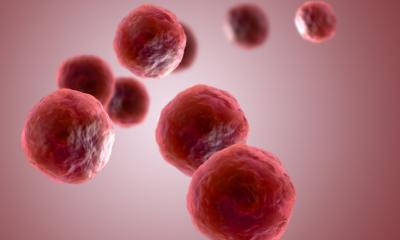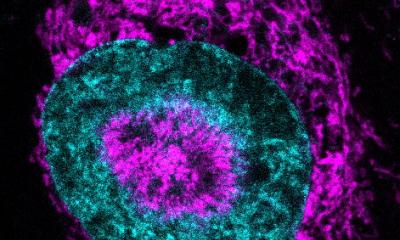© Dr_Microbe – stock.adobe.com
News • Opportunity for new treatment approaches
Atherosclerosis and cancer share surprising similarities, study finds
Researchers have discovered that the smooth muscle cells that line the arteries of people with atherosclerosis can change into new cell types and develop traits similar to cancer that worsen the disease.
Researchers have discovered that the smooth muscle cells that line the arteries of people with atherosclerosis can change into new cell types and develop traits similar to cancer that worsen the disease. Atherosclerosis is characterized by a narrowing of arterial walls and can increase risk of coronary artery disease, stroke, peripheral artery disease, or kidney disorders. The findings, published in the journal Circulation and supported by the National Institutes of Health (NIH), could pave the way for the use of anti-cancer drugs to counteract the tumor-like mechanisms driving the buildup of plaque in the arteries, the major cause of cardiovascular disease.
“This discovery opens up a whole new dimension for our understanding about therapeutic strategies for the prevention and treatment of atherosclerosis,” said Ahmed Hasan, M.D., Ph.D., program director in the Division of Cardiovascular Sciences at the National Heart, Lung, and Blood Institute, part of NIH. “Previous research has suggested that atherosclerosis and cancer may share some similarities, but this association has not been fully described until now.”
In fact, we saw that niraparib actually shrinks the atherosclerotic plaques in mice
Huize Pan
Using a combination of molecular techniques in mouse models and tissue samples taken from patients with atherosclerosis, the researchers of the new study characterized the molecular mechanisms that drive the smooth muscle cells to transition into cancer-like cell types. The researchers found increased rates of DNA damage and genomic instability – two hallmarks of cancer – in the converted smooth muscle cells of atherosclerotic plaque when compared to healthy tissue. Genomic instability is the increased tendency for DNA mutations and other genetic changes to occur during cell division.
Probing further, they also found that cancer-associated genes became more active as the smooth muscle cells were being reprogrammed into the cells that made up the plaque. Using a mouse model expressing a known cancer mutation accelerated the reprogramming and worsened atherosclerosis. Finally, treating atherosclerotic mice with the anti-cancer drug niraparib, which targets DNA damage, showed potential for preventing and treating atherosclerosis. “In fact, we saw that niraparib actually shrinks the atherosclerotic plaques in mice,” said Huize Pan, Ph.D., assistant professor of medicine at Vanderbilt University Medical Center, Nashville, Tennessee, and first author of the study.
Muredach Reilly, M.D., professor of Medicine at Columbia University, New York City, and senior author on the study, explained that understanding the molecular mechanisms that are driving the transition of smooth muscle cells can provide opportunities to disrupt tumor-like pathways and change how the cell behaves, in turn preventing or slowing progression of atherosclerosis.
Source: NIH/National Heart, Lung and Blood Institute
02.05.2024











